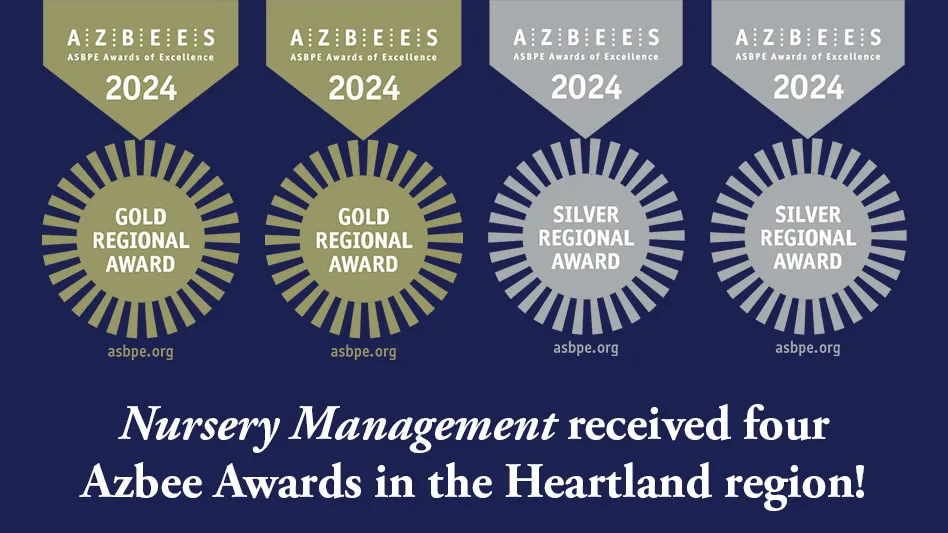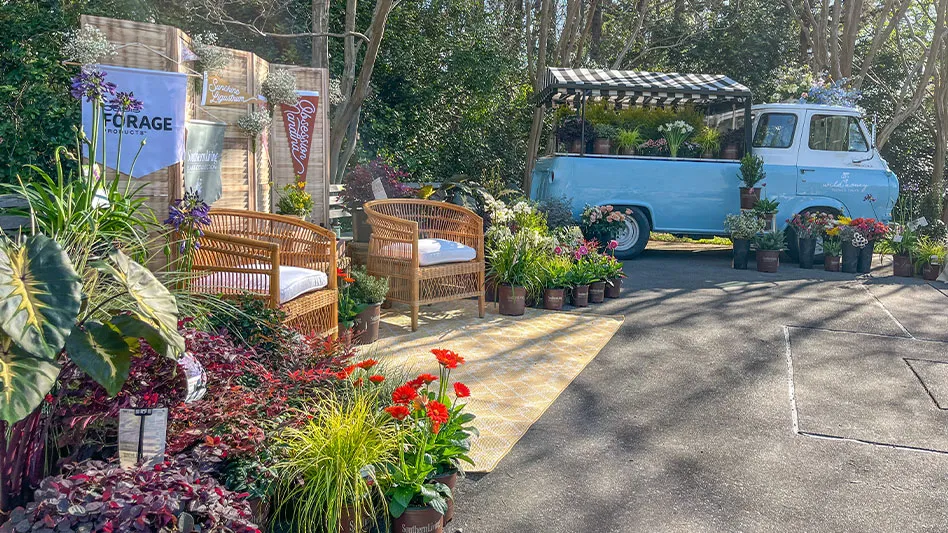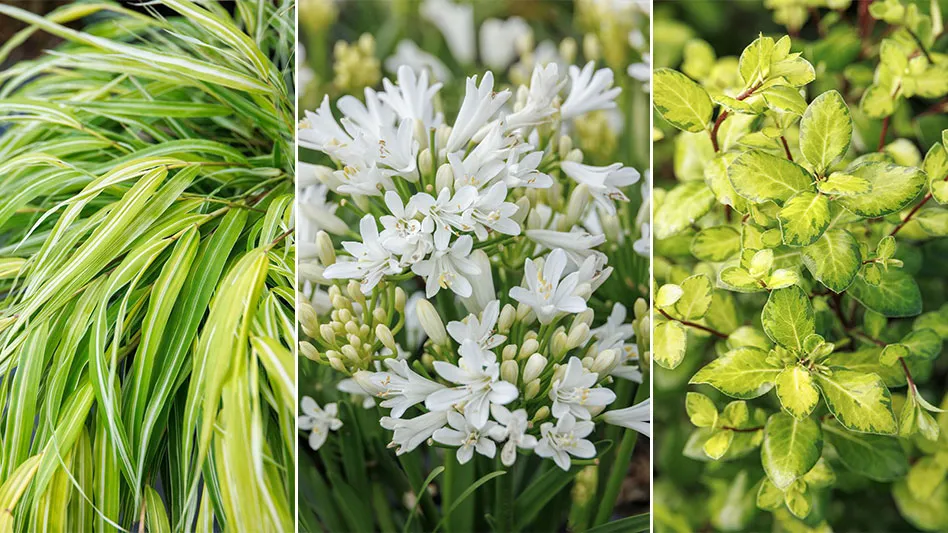There are so many great conifers, but I have chosen a few to discuss which I consider to have merit. In my experience as curator of The Harper Collection of Dwarf and Rare Conifers at Hidden Lake Gardens in southeast Michigan, I have seen hundreds of conifers which merit being reproduced. Many of these plants were propagated from witch’s brooms or other abnormal growth patterns such as sports or seed variations. I believe the genera listed below are underrepresented in the trade. There are also cultivars in my selection deserving of a larger audience. Specialty growers offer them, but not on a large scale.
Tsuga canadensis (Canadian hemlock, USDA Hardiness Zones 3-7) is a versatile plant which is available in many forms: prostrate, globose, weeping, fastigiate and variegated. Versatility in planting sites is also a great reason to have hemlock in your production line. This species can be planted in full sun to deep shade and does quite well. At Hidden Lake Gardens, we have the majority of our 19 cultivars in full sun conditions, and their performance has met our expectations. Some of my favorites are ‘Everitt Golden’ with its golden hues which appear as the new growth emerges in the spring; ‘Sargentii’ with its weeping, broad-spreading form; ‘Frosty’ with its spectacular white tips of new growth which linger through the growing season; and ‘Watnong Star’ with its tiny needles and strong 2-inch to 2½-inch shoots which emerge almost white and produce a star-like appearance. ‘Watnong Star’ was once proclaimed by Justin “Chub” Harper, donor of The Harper Collection of Dwarf and Rare Conifers, as his favorite of the dwarf hemlocks.
Due to shipping restrictions on hemlock, a grower of multiple cultivars in an area who can ship locally would be an asset. Wooly adelgid has infested the hemlocks of the Northeast and is moving rapidly across the country, causing shipping restrictions and making hemlock harder to get in some areas of its growing range.
Tsuga canadensis can be grafted or produced by cuttings.
 Abies koreana ‘Silberlocke’. DON WILD |
Abies koreana (Korean fir, Zones 5-6) is a slow-growing, small statured, compact tree. Probably the most noticeable characteristic is its blue, 2- inch to 3-inch long cones which can be found on rather small trees (3-5 feet tall). A. koreana appears to be more heat tolerant than other firs, but it prefers colder climates. ‘Silberlocke,’ with its curled up needles, reveals the bright silver of the bottom surface. ‘Silberlocke’ produces spectacular cones on young plants. ‘Cis’ is a round compact bun with glossy dark green needles. This plant will grow up to 8 inches tall by 12 inches wide in 10 years. ‘Silberperle’ is a slow-growing globe (cushion-shaped as a young plant) with green needles which are slightly contorted to reveal the silvery underside. This plant exhibits very conspicuous winter buds which have been described as small pearls. Abies koreana appears to be deer resistant as well.
All of the cultivars listed above would be grafted onto an Abies rootstock. Many Abies species have sensitive root systems and are better grown on the dry side with a very well-drained soil medium. Because of their rates of growth, many are investments in the future. A plant of size will command a premium price.
 Pinus cembra ‘Chalet’. Steven Courtney |
Pinus cembra (Swiss stone pine, Zones 2-7) cultivars are underrepresented in the trade. Some cultivars are hardy to Zone 2. P. cembra cultivars are grafted onto P. strobus rootstock using side or veneer grafting techniques. ‘Chalet’ (chalet Swiss stone pine) is an upright, narrow conifer with soft, blue-green foliage. It will grow to 6 feet tall and 2½ feet wide in 10 years. ‘Silver Sheen’ (silver sheen Swiss stone pine) is an upright to pyramidal, narrow conifer with silvery blue needles. ‘Blue Mound’ (blue mound Swiss stone pine) is a slower growing cultivar that grows to 3 feet tall and 2 feet wide in 10 years with soft blue, lush needles perfect for a small garden setting. P. cembra appears to be relatively pest free and prefers full sun and well-drained soil.
Cupressus nootkatensis aka Chamaecyparis nootkatensis (Nootka false cypress, Zones 4-7(8)) is a conical specimen with numerous drooping branches with long flattened leaves which are dark bluish green or grayish green. Cultivars can have yellowish foliage, bluer foliage and variegated foliage. ‘Pendula’ is a popular cultivar which produces a plant with a spectacular silhouette. Other cultivars have been introduced with a much more upright, narrow form. These include ‘Green Arrow’ and ‘Van den Akker,’ which is an extremely narrow form. These plants are reported to be difficult to propagate. Rooting cuttings has a high failure rate, and grafting incompatibilities have been noted. These plants bring a high price due to their difficulty to produce.
 Chamaecyparis obtusa ‘Dainty Doll’. Steven Courtney |
Chamaecyparis obtusa (Hinoki false cypress, Zones 5-8) is a slender pyramid with spreading branches and frond-like drooping branchlets. This species has numerous cultivars which will provide a wide range of growth habits, branching structures and colors to add to the landscape. ‘Filicoides’ has an open and irregular habit with long and straggly branches, dense clusters of fern-spray and green foliage. ‘Nana’ is an extremely slow growing cultivar to about 3 feet high and slightly broader with dark green foliage. ‘Confucius’ is a broad upright with foliage fans with a color range from bright lemon yellow on the exterior of the plant to shades of yellow, gold and green on the interior. ‘Dainty Doll’ is a slow-growing, globose plant with very tight green foliage. Many of the Hinoki false cypress cultivars are produced by rooted cuttings with varying degrees of success and rates of growth. This is another plant which is an investment in the future. Growers can expect to get top dollar for the plant. NM
Steven Courtney is the curator of The Harper Collection of Dwarf and Rare Conifers at Hidden Lake Gardens in southeast Michigan; http://hiddenlakegardens.msu.edu.

Explore the July 2013 Issue
Check out more from this issue and find you next story to read.
Latest from Nursery Management
- Proven Winners introduces more than 100 new varieties for 2025
- CIOPORA appoints Micaela Filippo as vice secretary-general
- Registration opens for Darwin Perennials Day
- April 2024 issue recap
- U.S. Department of Labor finalizes farmworker protection rule
- Azo Root is now available from Harrell’s
- Smith Gardens assumes operations of Skagit Horticulture
- Garden Media Group announces the fifth annual Women in Horticulture Week





